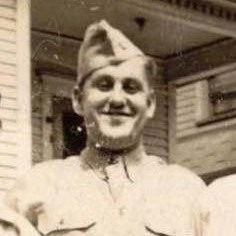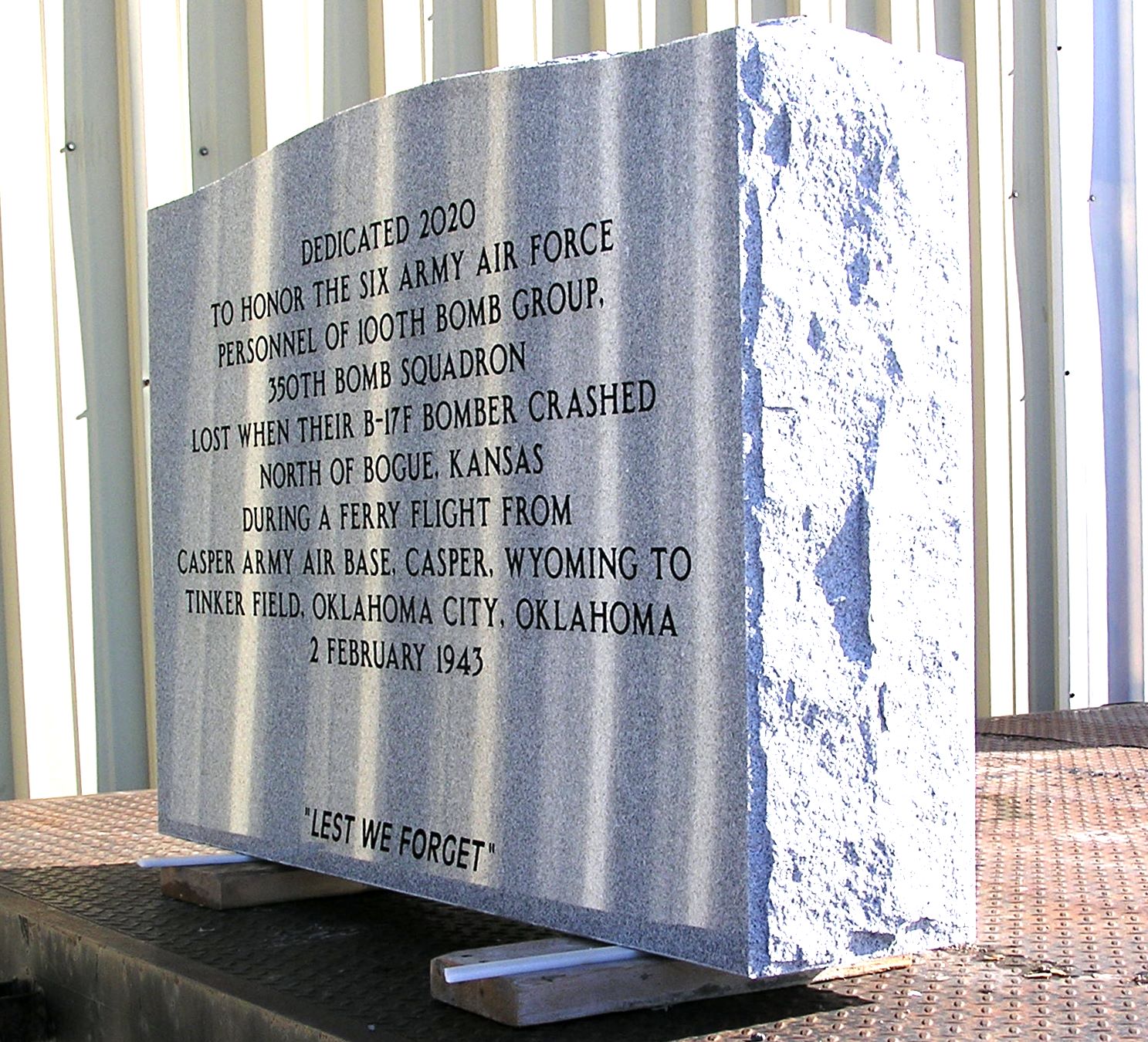Site contents (c) Michael Boss 2024

Following is a short synopsis of the Capaccio crash north of Bogue, Kansas 2 FB, 1943. Lt. Paul M. Capaccio, his crew of four and one passenger, left Casper Army Airfield, Wyoming on 2 FB, 1943 at 12:58 MST, on what was to have been a five hour ferry flight to Tinker Army Air Field in Oklahoma City. Capaccio's aircraft was a United States Army Air Force Boeing B-17F, SN 25105. The crew had newly transferred to the 100th Bomb Group, 350 Bomb Squadron based in Sioux City, Iowa.
On 2 FB, 1943, a major storm with tops at 20,000 ft. to ground level, was encountered by a B-24D flown by Lt. Roy Westley near Arnold, Kansas. The storm's effects resulted in a complete bailout and loss of one crew member and the plane in southern Trego County, Kansas. The Topeka Army Air Field based B-24D crash occured about 2:35 CST on the return trip from near Pueblo, Colorado.
It would appear Capaccio experienced the same storm. A last radio report from Capaccio was from Dawson County, Nebraska. They apparently did not follow the assigned flight path to fly directly from Kimball, Nebraska to Oklahoma City. It is possible Capaccio was staying north of the severe storm. He would seemed to have turned south over Dawson County and that path led directly to northeast Graham County, Kansas.
At approximately 4:20 CST, Witnesses near the crash site said the B-17F was having engine trouble and flying in heavy fog. Capaccio was flying southeast, made a turn back to the northwest, climbed into the fog, again turned southeast, came out of the clouds most probably in a slip and powering up, flew into a hill on land owned by the MckIsson family. The site is eight miles north and 1/2 east of Bogue, Kansas. The crash was horrific and Walker Army Air Field crews spent over a week removing the carnage. Remains of the crew were taken to the Cutting funeral home in Hill City, Kansas until they were retrieved by Walker Army Air Field personnel.
Lee M. Holmes, sheriff of Graham County, arrived soon after the crash. He related the plane plowed a ditch five to six feet deep, ten feet wide, and around one hundred feet long. Wreckage was strewn over a fifteen acre area. Holmes deputized area men to guard the site through the nightime. Two of the men were Carl Johnson and Ernie Lesage.
Both Westley and Capaccio were given pilot error for the crashes. However, neither pilot had any training for this type of weather! None. Capaccio had a total instrument flying time of 35:50 in 1942.
The memorial stone dedication ceremony was held at 1400 hours on 20 June, 2020 at the McFarland Cemetery in eastern Graham County Kansas. Approximately 42 people were in attendance that day, despite the hot, breezy conditions. It was a good day, where good things were done, and good people came together in peace. I officiated the ceremony and delivered the dedication speech; Mike read the names of the men we honored while I tolled a bell after each was announced. Great things happen when good people come together. Thank you to all who helped this to happen, and to those who attended. Rev. Dewey E. Boss

1st. Lt. Paul M. Capaccio, Pilot of B-17F bomber 42-5105

TSgt. Thaddeus I. Donlavage, Engineer of B-17F bomber 42-5105
 |
 |
 |